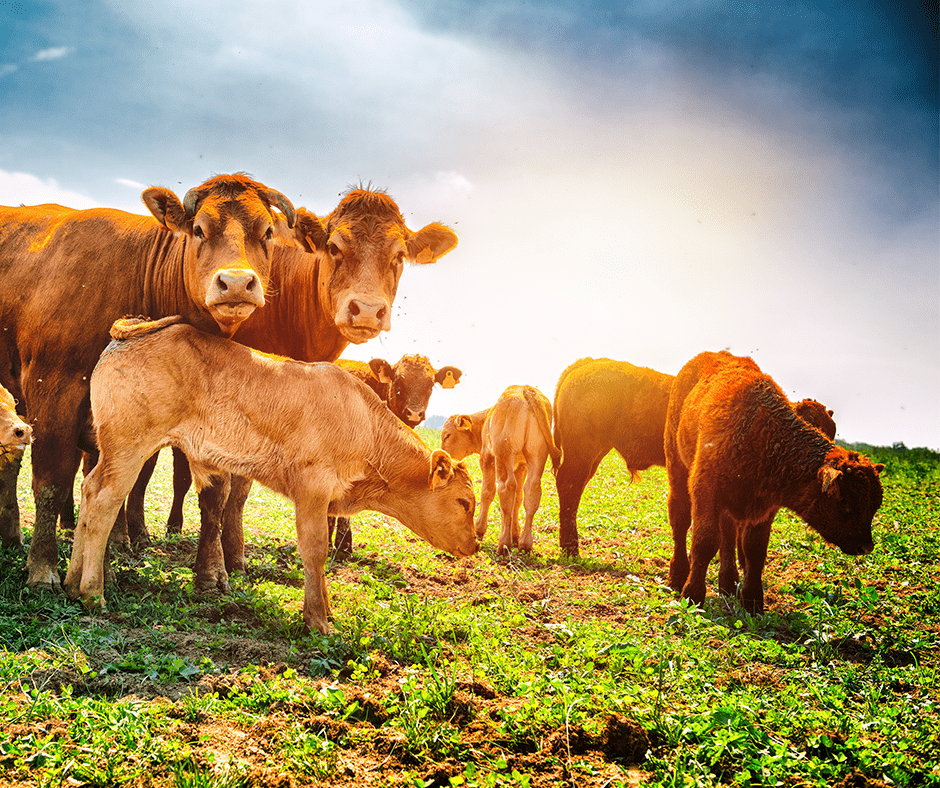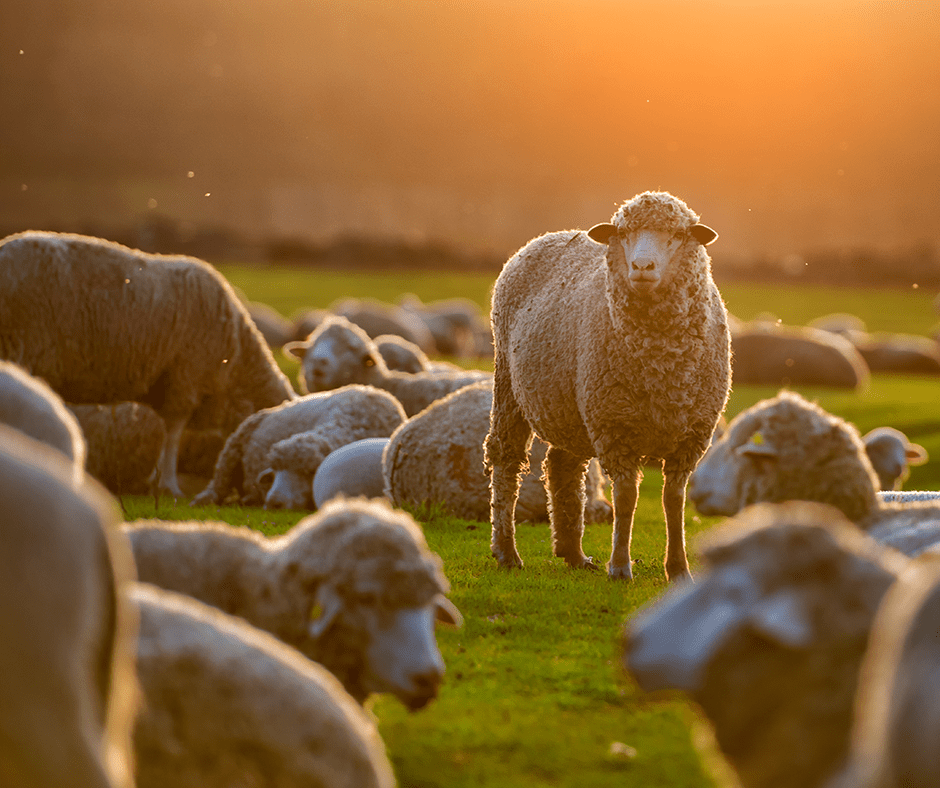As a farmland owner or ranch manager, it’s likely you’ve got a few animals running around on your property. Cattle, sheep, and goats can all have important roles on a farm and can mean a lot to your financial well-being too. So when you suddenly develop a coyote infestation, it’s understandable to get a little-worked up. Coyote attacks on livestock can be commonplace and devastating for small herd managers. But what’s the real story behind this? In this post, we’ll look at how the coyote lives and thrives, the effects on livestock, as well as some protective measures to implement on your farm if you’re having this problem. If you know your foe, you’ll be able to manage it more effectively.
Know Your Foe
Habitat
The coyote originally inhabited the western plains of the United States but has spread out and thrives all throughout North America. A member of the dog family, they are cousins to the wolf and the fox. The coyote can call almost anywhere home as they are adaptable – grasslands, field, forests and cohabitation with humans in suburban areas.
Communication
You may know the familiar coyote howls and yelps that they use to communicate at dusk and dawn. They also incorporate growling, barking and squealing into their language to talk to each other most.
Social Groups
Most people believe that coyotes form packs but in fact they will only form a pack for hunting and most often times prefer to hunt alone. They will only pair up with a mate and any young that they may have. Dominant mated pairs assert their authority as the only pair that can reproduce. They can maintain their territory by marking it up with their scent to keep away other coyotes and other predators that may threaten their food source.
Physical Abilities
As coyotes have adapted to their different surroundings, they have developed a number of physical traits to help them hunt and to protect themselves. Coyotes are excellent swimmers and can run up to forty miles an hour.
Coyotes are considered to be near-sighted with amazing peripheral vision to scan their surroundings. Once the sun goes down their eye sight improves for their night vision. Their glowing reflective eyes help them to view prey and predators better in the dark.
These predators rely on their excellent sense of smell to help them scavenge food from the wild including sniffing out food and livestock from several miles away as well as rodents underground.
To round out their excellent senses, coyotes also have excellent hearing, and can hear both threats and prey even under very thick vegetation and snow.
Diet
Coyotes have a very diverse diet and have adapted to many different surroundings in order to survive. They feed on anything from birds, rabbits, and young livestock to vegetation such as berries, fruits & vegetables and most interestingly – insects!
Reproduction
Although they do not mate for life, some pairs may stay together for a several years. Breeding time can occur between January – March with pups being born April- May. Depending on how populated an area is a litter of pups can vary widely from 2-12. Pups will generally go off on their own by fall to mid-winter to establish their own territories.

Coyote and Livestock
Some farm animals are more prone to predation by coyotes than others and the coyote population is higher in some areas as well. But here are a few types of animals you may have on your farm, and how coyotes might affect them.
Sheep
While coyotes were responsible for killing over half of the sheep that were lost to predators, the actual losses attributed to predators accounted for only 1.8 percent of all adult sheep and 3.9 percent of all lambs in 2014. That means coyotes were directly responsible for removing only 0.9 percent of all adults and 2.4 percent of all lambs in the inventoried U.S. population.
Goats
Further, according to a USDA report from 2017, coyotes and dogs accounted for the highest predator losses on adult goats and kids combined. Of all the predator-caused goat and kid deaths in 2015, 43.1 percent were due to coyotes. As with the sheep, there were 38,880 goat deaths caused by predators throughout the U.S. in 2015. Compared to the total inventory of goats in the U.S., that means coyotes were responsible for killing only about 0.5 percent of all goats and kids in 2015.
Cattle
Finally, according to a USDA report from 2017, coyotes accounted for the highest percentage of cattle deaths due to predators (40.5 percent) in 2015, which is a little shocking considering the size difference. And of all the predator-caused calf deaths in 2015, 53.1 percent were due to coyotes. In all, coyotes were responsible for killing about 0.02 percent of all adult inventoried cows on cattle ranches in 2015 and about 0.37% of all inventoried calves.

Livestock Protection Measures and Options
When you know your foe, you can take the necessary protective measures for your livestock. Compare the coyote-related deaths compared to the total livestock population across all states, the coyote effects on livestock are a bit more reasonable. Adult sheep and lambs are the most affected of these three species, as a measure of the total population. But if you’re a farmer who’s having coyote problems, it probably doesn’t feel all that reasonable to you. While you can often seek help from state or federal agencies when you’re having depredation issues on your animals, sometimes there are program limitations or maybe you’re not interested in that route. So here is how to protect livestock from coyotes – you have a few options available to you.
Lethal Control
Many farmers tend to opt for this route where legal and possible. It consists of shooting, trapping, or otherwise killing coyotes yourself or having government programs remove them. Coyote hunts can be very challenging and will test you as a hunter, as they are very smart and wary animals. For that reason alone, some people might even want to lease your land. This seems like it would be one of the easiest and most effective options to control coyote populations. But there’s a lot of research out there these days that questions how truly effective it is. Since coyotes are very territorial, removing individuals opens up new territories for others to use. With fewer individuals, reproductive rates and pup survival often increase in the local population. And with larger families, coyotes need to kill more or larger livestock to feed their pups. To further add to the issue, if you remove a dominant coyote that does not kill your livestock, you may open the floodgates to a bunch of younger ones that didn’t kill your animals because of that “guard coyote” – but now they will. It can quickly become a devastating cycle.
Non-Lethal Control
So instead of risking this cycle, here’s how to deter coyotes from livestock in a non-lethal way. The best defense against coyotes is often being more present on your farm. Both humans and guard/shepherd dogs (e.g., Great Pyrenees) can deter predators very effectively. When you observe them, go out of your way to harass and frighten them. Keep switching up the times you visit your herd if possible, to keep them from patterning you. Installing better quality fencing and pens/enclosures can also keep your herd safer when you’re not physically able to keep watch over them. Electric fences are excellent repellants. Another popular option is to mix up the species in your herds. For example, while sheep and goats are more vulnerable to coyote predation, donkeys and llamas are not; in fact, they are very aggressive towards them and can protect their own little herds. Even training your cows and sheep or goats to live together in the same pasture can help provide additional protection for them.
Make Your Property Less Attractive to Coyotes
Coyotes are opportunistic so they will find the easy meal or shelter to take advantage of. They will shelter in outbuildings or in old wood piles. Lock up barns, discard or burn woodpiles and fence off any other potential den sites. They like to use tall grass and shrubs to conceal them when they are stalking prey so keep the vegetation trimmed up so they don’t have any places to hide.
Compost bins and garbage cans attract coyotes. Keep your bins inside, in enclosures, locked up, or weigh the lids down. Keep the area free of scraps such as deer carcasses or open pet food and water sources. Enclose and fortify animal enclosures for rabbits, chickens and other small livestock. Keep pets and small children inside at dawn and dusk.
By making your property non coyote friendly they are less likely to wander through your pens and property.
Are Coyotes Bad?
Of all the various predators out there, coyotes tend to have the largest effect on cattle, sheep, and goats. Of course, there are regional differences too. Some parts of the country may have more problems with wolves, bears, or other predators, but coyotes seem ever-present. Does that mean they should be eradicated from your area? It depends on who you ask and your point of view, but probably not entirely. They are good for keeping rodents such as rabbits, squirrels and gophers down. It is a delicate balance as coyotes are known as a Keystone species that have great impact on the eco system. If their population is down, rodents and other animals that can cause damage to your property is up. If the coyote population is up, then they are more likely to prey on your livestock more but the rodent population will also go down.
They are remarkably adaptable animals, and you can’t help but admire their survival instincts a bit. And as additional research is concluding, removing coyotes may just cause more coyote predation issues. So if you’re going to raise livestock, it’s up to you to find a good balance between coexisting and managing coyote populations.

Leave A Comment